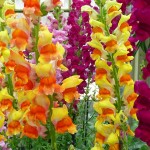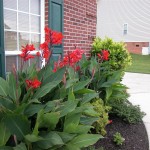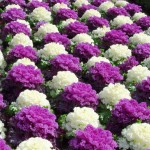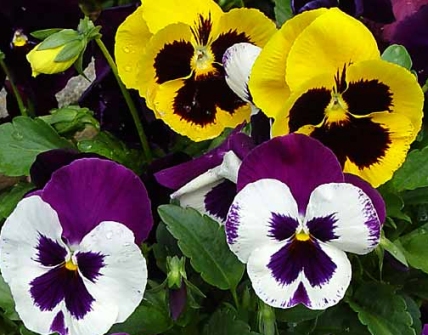Why should I plant that flower when I know it will die? Why would someone spend good, hard-earned cash on a plant that they know will die as soon as it gets cold, or, for that matter, really hot? Gee, I just provided the common gardener’s definition of an annual. But, botanically speaking, an annual is a plant that sprouts, grows, produces flowers and seeds, and dies in one year’s time.
Let me answer the first question. People love flowers, and they love plants that bloom all summer long. You don’t get that with perennials. People also like to dig in the dirt and create a mastery of space and a sense of control. Flowering herbaceous plants can be installed in the ground or in any type of container (even an old boot, wheelbarrow, or bathtub). Potted plants can be moved anywhere you want color: the porch, the deck, around a swimming pool, and in the house. Hanging baskets can be hung on light posts, from tree branches, or from a porch ceiling. Annuals are versatile and exhibit a myriad of color and growth habits. The sky is the limit when using what we call annuals.
A lot of plants we call annuals are plants that are actually perennials. A geranium in Indiana will be killed by the first frost, whereas, a geranium in Florida or a greenhouse can last many years. So, we look at our summer annuals in relation to our weather. We can plant annuals for the early spring (pansies, snapdragons, violas, English daisies, and  dianthus). When it gets really hot these plants fail, then we turn to the summer plants (petunias, geraniums, impatiens). Then, as it gets cold again in the fall we can plant mums, ornamental kale and cabbage, and pansies again. This sounds like a lot of work, but for people who love to garden and constantly want color, this is the plan of attack.
dianthus). When it gets really hot these plants fail, then we turn to the summer plants (petunias, geraniums, impatiens). Then, as it gets cold again in the fall we can plant mums, ornamental kale and cabbage, and pansies again. This sounds like a lot of work, but for people who love to garden and constantly want color, this is the plan of attack.
Why limit our annual plant selection to all the old varieties? The big rage now is to incorporate tropical plants (both foliage and flowering) into the planting palette. Bananas, cannas, elephant ears, and the like are great companion plants to annuals and offer a terrific boldness to the summer show.
Not all the plants we use have to be thrown away. Many people over-winter plants such as geraniums, cannas, dahlias, banana, elephant ear, and the other tropicals. They can be used year after year. Many actually reproduce vegetatively and produce more plants. So, these plants give back with more. The money spent buying them becomes an investment and the return is more plants than you started out with. A great resource for overwintering certain plants is Bulbs in the Basement,Geraniums on the Windowsill by Alice and Brian McGowan. 
The next question is ‘where to buy?’ Sure, the big box stores have lots of pretty plants sitting out right now, and the price is low. I would heartily advise people to avoid these plants. They are put out too early (I saw tomato plants for sale at a grocery store two weeks ago!). These plants are very stressed and will not perform well. I recommend purchasing from an independent garden center. You will get quality, healthy plants from the people who know them, grow them, and know how to take care of them. Anyway, it’s always beneficial to support small business and people who know what they are doing.
A bit of advice: don’t plant shade impatiens this year. Impatiens downy mildew has finally hit Indiana and the devastation is dramatic. Plants seem like they die overnight, and, all of them die that get infected. I would wait until the grower industry has figured out this problem before planting shade impatiens. One caveat, they seem to survive in pots if new, clean potting mix is used every year.
Here are some literary references for the different varieties of annuals, tropicals, and tender perennials that can be used in Indiana gardens: Armitage’s Manual of Annuals, Biennials, and Half-Hardy Perennials by Alan M. Armitage; Annuals and Tender Plants for North American Gardens by Wayne Winterrowd; and Taylor’s Guide to Annuals.
Experiment with plants you have never used before. Be bold and wild. Above all, have fun.

